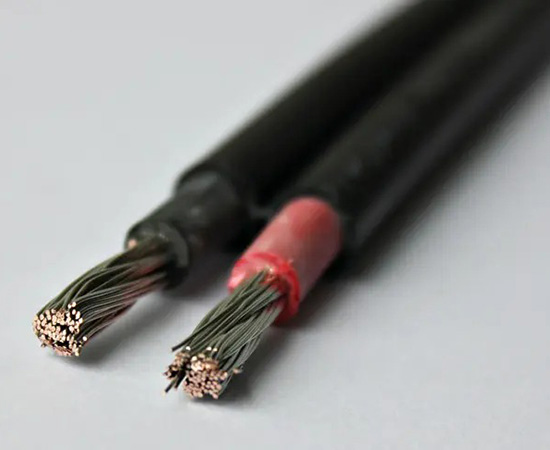Solar modules are the core part of solar power systems.
Its function is to convert solar energy into electrical energy and send it to the battery for storage to facilitate the work of the load.
As an important part of photovoltaic modules, the output power of solar cables is very important.
So, what factors will affect the maximum output power of solar modules?
1. Temperature characteristics of solar modules Photovoltaic modules generally have three temperature coefficients: open circuit voltage, short circuit current, and peak power.
When the temperature rises, the output power of PV modules will drop. The peak temperature coefficient of mainstream crystalline silicon photovoltaic modules on the market is about -0.38-0.44%/C, that is, for every degree of temperature increase, the power generation of photovoltaic modules decreases by about 0.38%.
The temperature coefficient of thin-film solar cells is much better. For example, the temperature coefficient of copper steel selenium (CIGS) is only -0.1-0.3%, and the temperature coefficient of cadmium (CdTe) is about -0.25%, which is better than that of crystalline silicon cells.
2. Module aging and attenuation In the long-term application of photovoltaic modules, there will be slow power attenuation. The maximum decay is about 3% in the first year, and the annual decay rate for the next 24 years is about 0.7%.
From this calculation, the actual power of photovoltaic modules can still reach about 80% of the initial power after 25 years.
3. Coverage of dust and rain Large-scale photovoltaic power plants are generally built in the Gobi area, where the wind and sand are relatively large and there is little precipitation. At the same time, the frequency of cleaning is not too high.
After long-term use, it will cause an efficiency loss of about 8%. Mismatched modules in series solar modules are mismatched when connected in series, which can be intuitively explained by the cask effect.
The amount of water in the barrel is limited by the shortest wooden board, and the output current of the photovoltaic module is limited by the lowest current in the series module.
In fact, there will be a certain power deviation between components, so component mismatch will cause a certain power loss.
The above three points are the main factors affecting the maximum output power of photovoltaic cell modules, which will cause long-term power loss.
Therefore, the later operation and maintenance of photovoltaic power plants are very important, which can effectively reduce the loss of benefits caused by failures.



